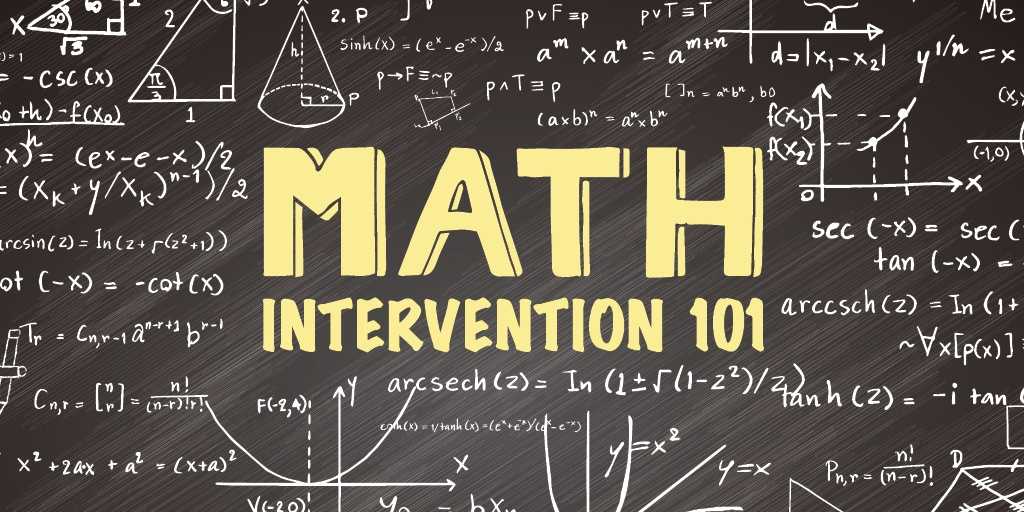Have you ever found yourself standing before your class, explaining a math concept for the umpteenth time, only to see a sea of confused faces staring back at you? It’s a moment many educators experience, signaling a disconnect that’s neither the fault of the teacher nor the students. This common scenario underscores the urgent need for effective math intervention strategies to address diverse learning needs.
Math & ELA | PreK To Grade 5
Kids see fun.
You see real learning outcomes.
Watch your kids fall in love with math & reading through our scientifically designed curriculum.
Parents, try for free Teachers, use for free
In this blog, we’ll dive deep into math intervention strategies, outlining what they are and how you can implement them to make a real difference in your student’s learning journey.
What is Math Intervention?
At its core, math intervention is a targeted approach designed to help students overcome the hurdles they face with mathematical concepts. Unlike the broad strokes of regular math instruction, math intervention zooms in on specific challenges, offering a lifeline to those who find themselves adrift in a sea of numbers and equations.
The primary goal of math intervention is straightforward: to ensure every student achieves proficiency in math by addressing their individual learning gaps. This is done through various intervention strategies for math, which are tailored to meet the unique needs of each student. The strategies deployed are as diverse as the learners, from one-on-one tutoring sessions to small group work.
10 Math Intervention Strategies for Struggling Students
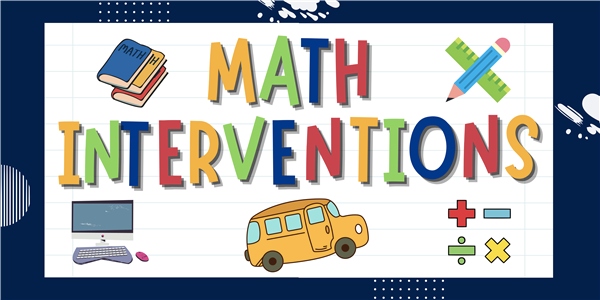
1. Diagnostic Assessment
Diagnostic assessment acts as a compass, guiding educators to identify specific areas where students struggle with math. It’s about gathering insights into each student’s unique challenges.
How it can be done:
- Use pre-tests to evaluate students’ knowledge before starting a new unit.
- Employ quizzes and surveys to understand students’ comfort levels with various math topics.
- Analyze errors in homework and tests to pinpoint misconceptions.
With Splashlearn, you can track your student’s progress and identify areas that they need help with. Here is how the SplashLearn teacher dashboard looks:
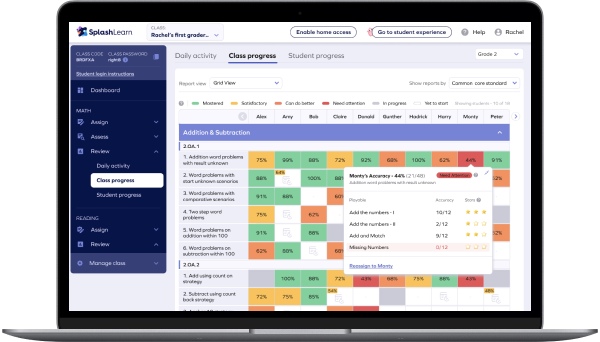
2. Differentiated Instruction
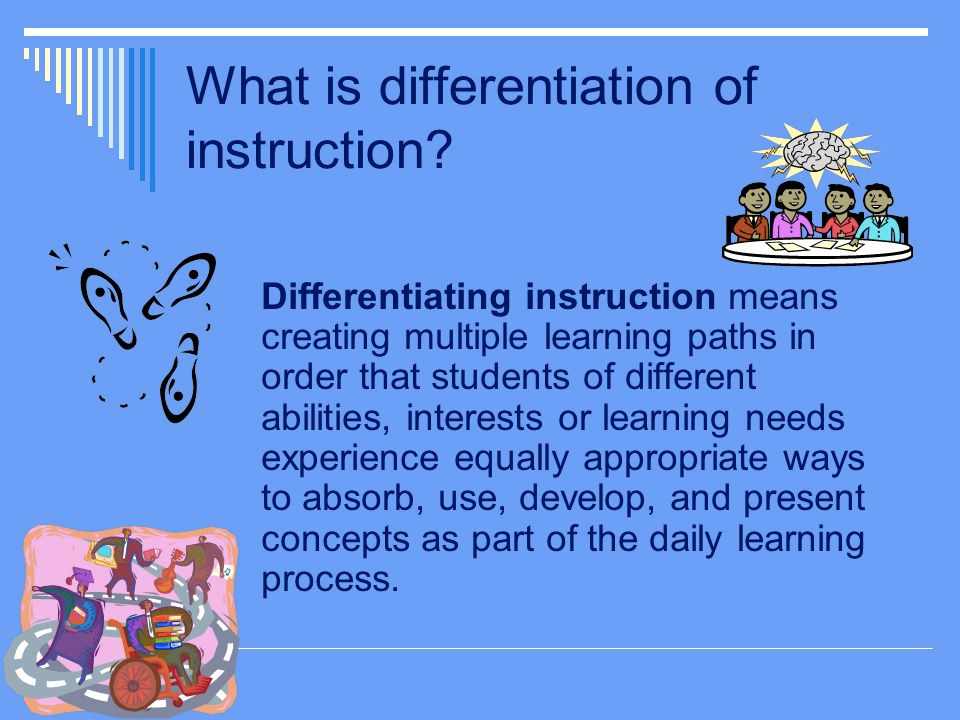
Recognizing that every student’s learning journey is unique, differentiated instruction tailors teaching methods to suit individual needs. It ensures that all students find pathways to understanding and success in math.
How it can be done:
- Group students based on their skill levels for targeted teaching.
- Offer varied types of content delivery—visual, auditory, and kinesthetic—to cater to different learning styles.
- Adjust the pace of instruction to meet the needs of each learner.
3. Use of Manipulatives
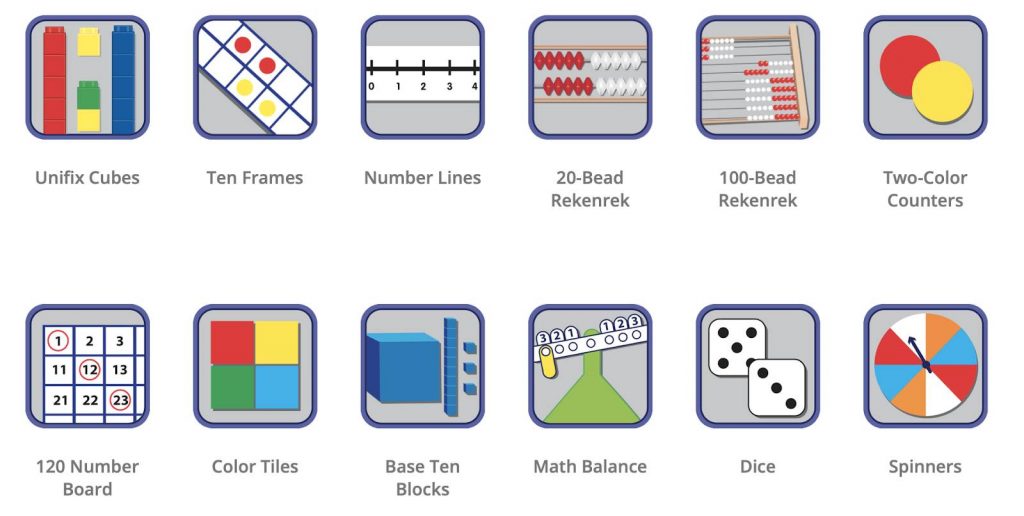
The use of physical tools, or manipulatives, transforms abstract math concepts into tangible learning experiences. This strategy helps students visualize mathematical ideas, fostering a deeper understanding.
How it can be done:
- Integrate blocks, beads, or counting sticks during lessons to illustrate concepts.
- Encourage students to use manipulatives to solve problems and demonstrate their thought processes.
- Create interactive activities that incorporate these tools to enhance engagement and comprehension.
4. Visual Aids and Graphic Organizers
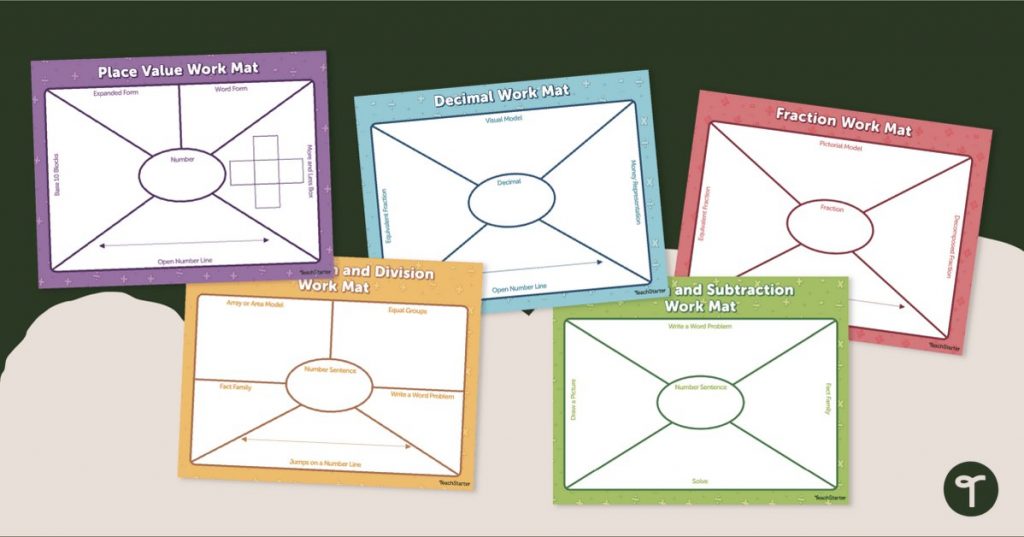
This strategy involves using diagrams, charts, and other visual tools to make complex math concepts easier to understand. Presenting information visually allows students to see the connections and relationships between ideas, enhancing their comprehension and retention.
How it can be done:
- Create flowcharts or diagrams to outline steps in a math process.
- Use graphic organizers to break down problem-solving strategies.
- Incorporate visual aids in lessons to illustrate concepts like fractions, geometry, and algebra.
5. Math Vocabulary Building
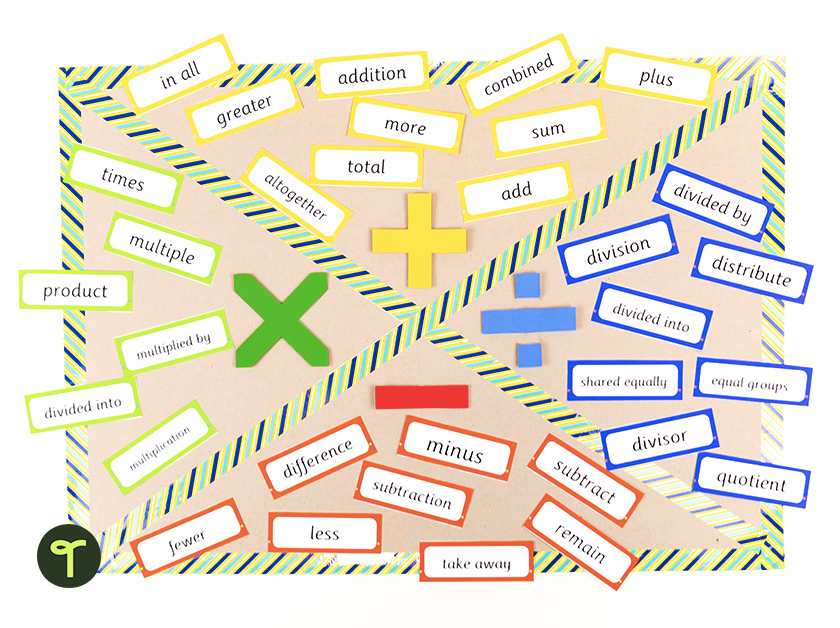
A strong grasp of math vocabulary is crucial for students to follow instructions, understand questions, and express their mathematical thinking. This approach focuses on developing a comprehensive math language, aiding in clearer communication and deeper understanding.
How it can be done:
- Introduce and practice key vocabulary terms in context during lessons.
- Use word walls in the classroom to display and reinforce important terms.
- Encourage students to use specific math language in their explanations and reasoning.
6. Integrating Technology
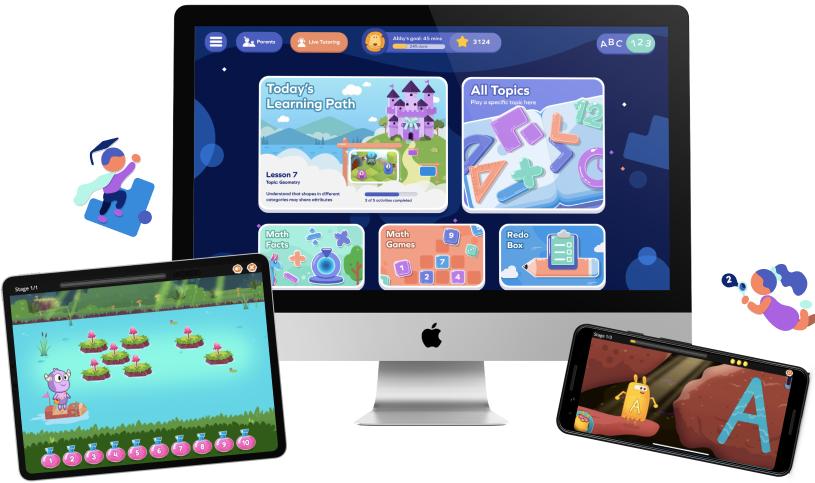
Leveraging technology in math education offers dynamic and interactive ways for students to engage with mathematical concepts. Educational software and apps can provide personalized learning experiences, immediate feedback, and various resources to support diverse learning needs.
How it can be done:
- Implement math learning apps and online platforms for practice and exploration.
- Use interactive whiteboards or projectors to demonstrate problems and solutions.
- Incorporate simulations and virtual manipulatives to offer hands-on learning in a digital format.
7. Peer Tutoring
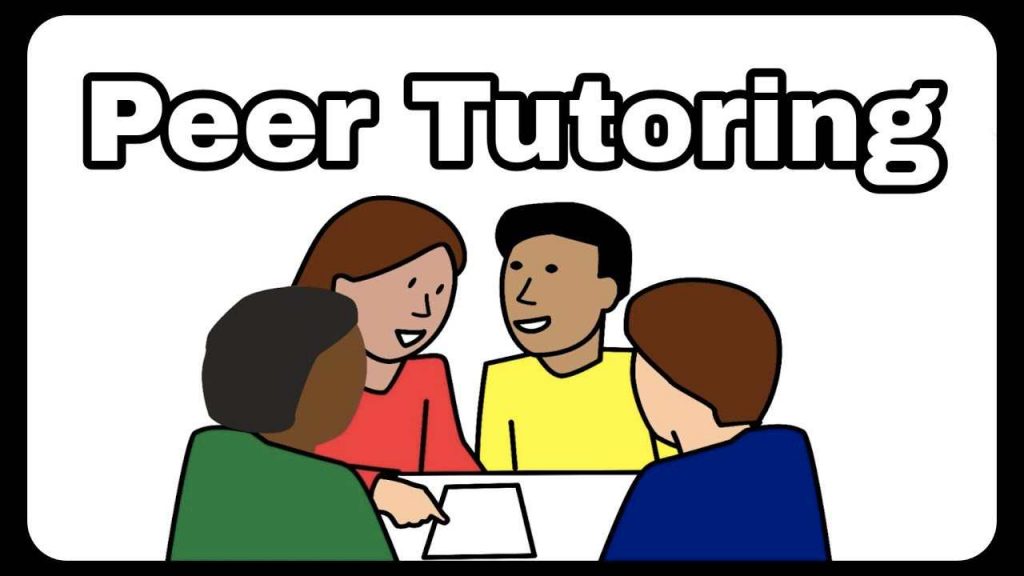
Peer tutoring is a collaborative learning strategy where students help each other understand math concepts and solve problems. This method fosters a supportive learning environment, encouraging students to communicate, collaborate, and learn from one another.
How it can be done:
- Pair up students with differing skill levels to facilitate learning and mentorship.
- Organize group study sessions focused on specific math topics or challenges.
- Encourage older students or those proficient in math to lead tutoring sessions for their peers.
8. Scaffolded Instruction
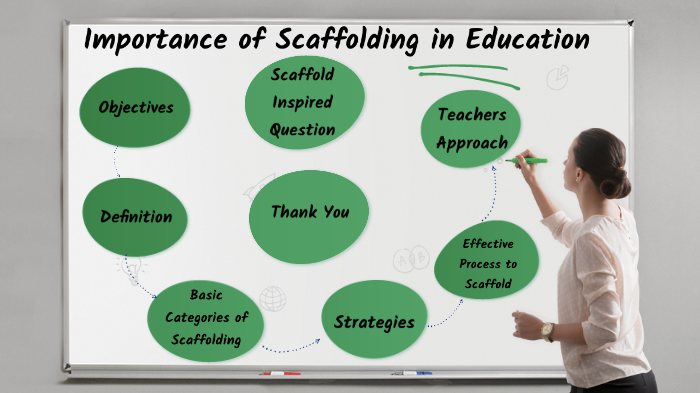
Scaffolded Instruction is a teaching method where the teacher gradually reduces their support, allowing students to become more independent in their learning process. It’s like teaching someone to ride a bike with training wheels and gradually removing them as they gain confidence and skill. This approach is crucial in math interventions for elementary students, offering them the stepping stones to mastery and independence.
How it can be done:
- Start with highly structured activities where the teacher leads the process.
- Gradually shift to tasks that require more independence from students.
- Provide tools and resources, like cheat sheets or reference materials, that students can use on their own.
9. Real-World Application
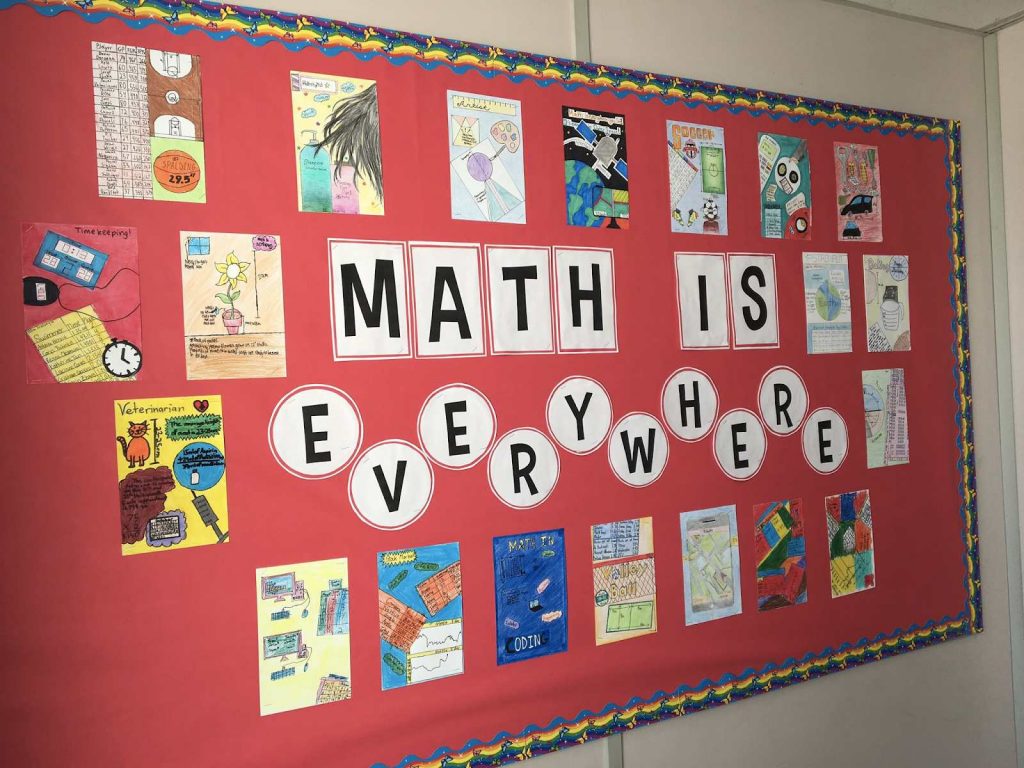
This strategy involves linking math concepts to everyday situations and problems. It shows students the practical side of math, making learning more engaging and meaningful. When students see how math works in the real world, it enhances their understanding and appreciation of the subject. Mathematics intervention programs incorporating real-world applications can significantly increase students’ motivation and interest in math.
How it can be done:
- Use examples from cooking, shopping, or sports to teach math concepts.
- Encourage students to identify and solve real-life math problems.
- Integrate projects that require students to apply math skills in real-world scenarios.
10. Regular Feedback and Encouragement
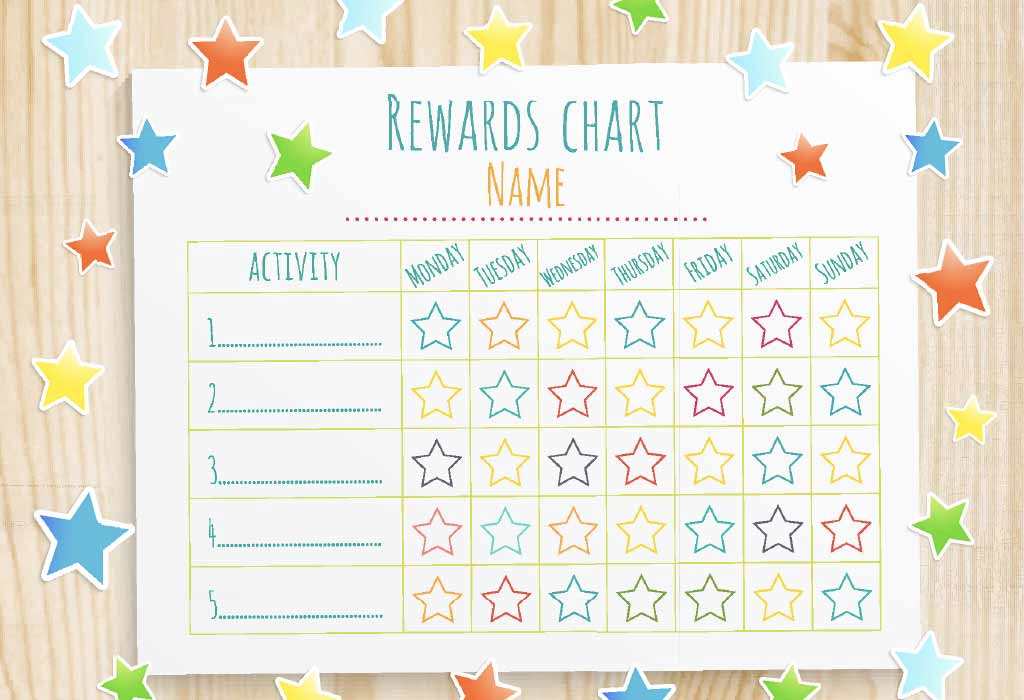
Providing students with ongoing feedback and positive reinforcement is key to effective math intervention programs. This strategy helps build students’ confidence, keep them motivated, and guide their progress by letting them know where they stand and how to improve.
How it can be done:
- Offer timely, specific feedback on students’ work and progress.
- Celebrate successes, no matter how small, to encourage persistence.
- Use constructive criticism to guide students towards better understanding and strategies.
Who Needs Math Intervention?
Identifying which students need a helping hand in math isn’t always straightforward. Here’s how teachers can pinpoint those who might benefit most from math intervention:
1. The Identification Process
- Teachers are often the first to notice when a student struggles. You might see a student repeatedly making the same mistakes, showing frustration, or avoiding math tasks altogether. These are clear signals that additional support could be necessary.
- It’s important to consider not just one bad test score but a pattern of difficulties. Consistent struggles with homework, quizzes, or classwork can indicate that a student might need intervention.
2. The Role of Standardized Tests
- Standardized tests provide a snapshot of a student’s math skills compared to grade-level expectations. Scores significantly below average are a red flag that a student may need targeted help.
- While these tests are useful, they’re just one piece of the puzzle. Remembering that they don’t capture everything about a student’s abilities or potential is crucial.
3. Teacher Observations
- Teachers see students in action every day. You know who participates eagerly and who hangs back. Your detailed observations in the classroom are invaluable for identifying students who might not fully grasp math concepts.
- Sometimes, it’s not just about who can’t do the math but also about who lacks confidence or shows little interest. These students might also benefit from intervention strategies that boost their engagement and self-assurance.
4. Parent Feedback
- Parents can offer perspectives on how their child feels about math at home, including anxiety, frustration, or a lack of interest in homework. This information can be vital in understanding a student’s intervention needs.
- Working together, teachers and parents can share observations and insights, ensuring that students receive support at school and at home.
When to Implement Math Intervention Strategies?
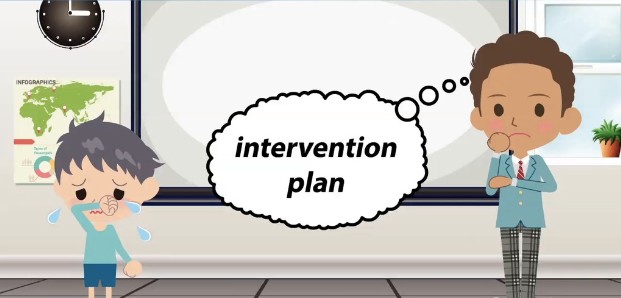
Deciding when to start math intervention strategies and how often to conduct these sessions is key to their success. Let’s break it down into simple, actionable advice:
1. Timing is Everything
- Early Intervention: The sooner, the better. Starting intervention when you notice a student struggling can prevent minor issues from becoming major obstacles. Don’t wait for the problem to grow; tackle it head-on at the first sign of difficulty.
- Before New Units or Concepts: If possible, introduce intervention strategies before moving on to more complex topics. This helps ensure all students have a solid foundation to build new knowledge.
2. Frequency Matters
- Regular, Consistent Sessions: Consistency is crucial for math intervention. Whether it’s daily or a few times a week, setting a regular schedule helps students know what to expect and builds the routine into their learning process.
- Adaptable to Student Needs: The frequency of intervention sessions may need to adjust based on how quickly a student progresses. Some may need more intensive support initially, with the possibility of tapering off as they gain confidence and skill.
3. Best Practices for Intervention Sessions
- Short, Focused Sessions: Keep intervention sessions short and focused. Long sessions can be overwhelming, especially for students already struggling with math. Aim for short bursts of concentrated learning to keep students engaged and not burnt out.
- Small Group or One-on-One: Depending on the available resources, try to keep groups small or work one-on-one with students. This ensures that each student gets the attention they need to address their specific challenges.
Role of Teachers in Math Intervention
Teachers are at the heart of successful math intervention programs. Their role goes beyond just delivering content; it encompasses planning, implementing, assessing, and collaborating to ensure each student receives the support they need. Let’s simplify and outline these responsibilities:
1. How to Plan Intervention Strategies
- Teachers start by identifying the specific math skills or concepts students struggle with, using assessments and observations.
- Based on these needs, teachers select appropriate intervention strategies that will best support student learning.
2. Implementing Intervention Strategies
- Teachers provide targeted instruction tailored to each student’s individual needs. This might involve breaking down concepts into smaller, more manageable steps, using manipulatives, or incorporating technology.
- It’s crucial to create a learning environment where students feel safe to express confusion, ask questions, and make mistakes. This supportive atmosphere encourages growth and learning.
3. Assessing Intervention Effectiveness
- Teachers continually monitor students’ progress through regular assessments and feedback. This helps to adjust intervention strategies as needed to ensure they are effective.
- Based on assessment results, teachers may need to adjust their approach, trying different strategies to find what works best for each student.
4. Collaboration Is Key
- Teachers communicate with parents to provide updates on their child’s progress and to discuss ways to support learning at home.
- Collaboration with special educators, school psychologists, and other professionals is essential. These experts can offer additional insights and strategies to support students’ learning.
How Can SplashLearn be Used as a Math Intervention Strategy
SplashLearn stands out as a powerful tool in the math intervention toolkit, offering interactive, engaging, and personalized learning experiences for students. Here’s how educators can leverage SplashLearn to bolster their math intervention efforts:
1. Adaptive Learning Paths: SplashLearn’s platform adapts to each student’s learning level, providing challenges just right for their current understanding. This personalization ensures that students are neither bored with content that’s too easy nor overwhelmed by content that’s too hard. The scaffolding in skill progression is well-researched, so kids learn to apply concepts independently.
2. Resources for Diverse Learning Needs: The platform offers a range of games and worksheets that cater to different learning styles and needs, making it a valuable resource for differentiated instruction. Whether a student needs practice with basic math skills or more advanced problem-solving abilities, SplashLearn has resources to support their growth.
3. Immediate Feedback without Penalties:
- Encouraging Response to Mistakes: Instead of penalizing wrong answers, SplashLearn responds with encouraging messages like “Hey, let’s try that again!” This approach helps build a positive learning environment, reducing math anxiety and encouraging a growth mindset.
- No Timed Challenges: SplashLearn allows students to work at their own pace by removing the pressure of timed challenges. This is particularly important for learners who need extra time to process and solve problems, ensuring they don’t feel rushed or stressed.
4. Progress Tracking for Educators: Teachers can monitor their student’s progress in real time, gaining insights into their strengths and areas for improvement. This feature enables educators to tailor their intervention strategies more effectively based on detailed data about each student’s learning journey.
5. Facilitates Home-School Connection: SplashLearn can be accessed at home, making it easier for parents to get involved in their child’s math learning. Educators can collaborate with parents, providing updates on their child’s progress and suggestions for supporting their learning outside the classroom.
Conclusion
Implementing effective math intervention strategies and exploring innovative math intervention ideas like SplashLearn can significantly enhance the learning experience for students struggling with math. By tailoring our approach to meet each student’s unique needs, providing supportive and adaptive tools, and fostering a positive learning environment, we can make math accessible and enjoyable for everyone.
Frequently Asked Questions (FAQs)
What are Tier 1 and 2 interventions in math?
Tier 1 interventions are general strategies used in the regular classroom to support all students, while Tier 2 interventions provide targeted support to small groups or struggling individuals.
How do you structure a math intervention class?
A math intervention class is structured around identifying specific learning gaps, using targeted instruction and practice, and regularly assessing progress to adjust strategies as needed.
What is a push in math intervention?
A push in math intervention involves the math specialist or interventionist coming into the classroom to work directly with students in their regular learning environment, providing support alongside the classroom teacher.
What makes a good math intervention?
A good math intervention is tailored to individual student needs, uses evidence-based strategies, provides frequent feedback, and actively engages students in their learning process.

















